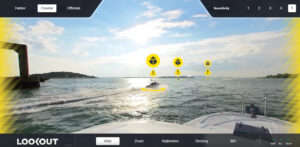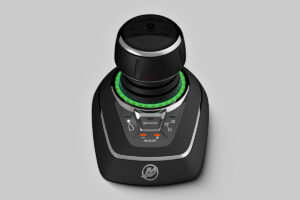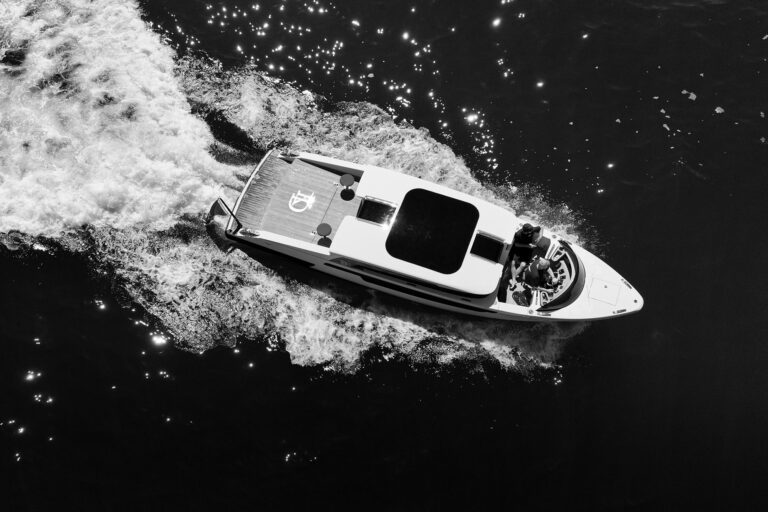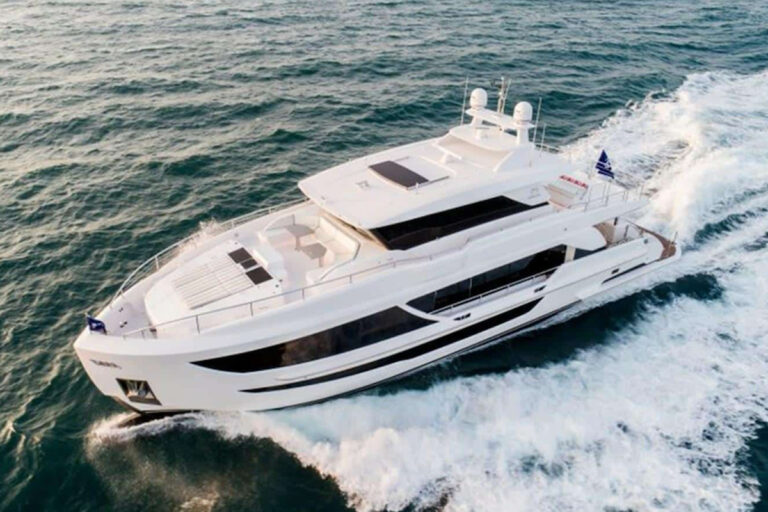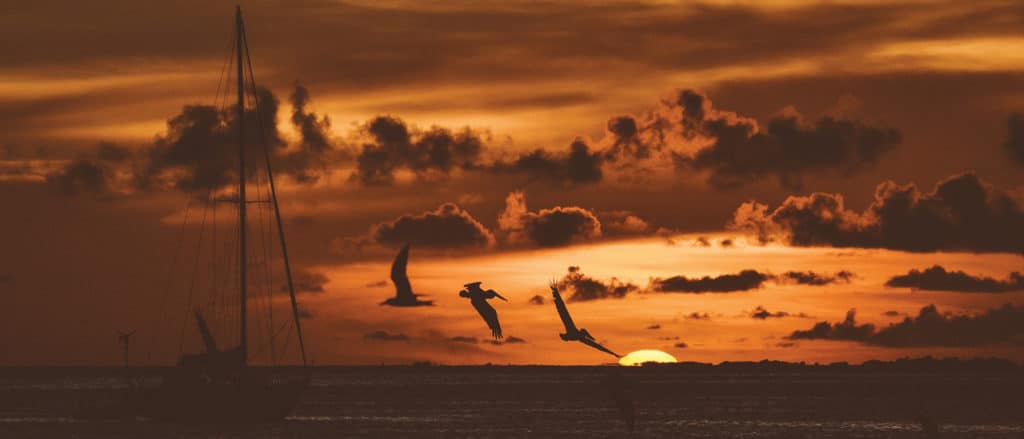
Bright, confusing lights punctuated the southwestern skyline as Serafin, a Liberty 458, exited the Panama Canal en route to Tahiti. Her crew’s attention was riveted to all four horizons. “There were hundreds of ships ahead — it looked like a city,” says Jeff Robbins, co-founder of Vesper Marine, who, along with his wife, Deirdre Schleigh, was on board in May 2007 with Serafin’s owner. Fortunately, Robbins had spent the previous two years cruising New Zealand aboard his Nordic 40, Vesper, and developing a stand-alone, black-box device that could receive Class A signals from the automatic information system transponders that commercial ships carry. Those AIS signals display each ship’s range, bearing and crossing information. Robbins’ box, likely the world’s first recreational-level AIS device, employed algorithms to help sift through the target-rich horizon. “Which ones pose a collision risk?” Robbins says. “The little device said to ignore all of these ships and just watch these two. It was amazing.” Today, following the years that he and Schleigh spent sailing and applying a passion for computers, their company, Vesper Marine, has helped to revolutionize AIS use aboard recreational yachts — and continues to develop and leverage AIS technologies. As a teenager, Robbins, now 60, was drawn to computers and emerging technology. “I didn’t go to college,” says Robbins, adding that the computer industry was taking its nascent steps in 1976 when he graduated from high school in Connecticut. “I was prepared for college, but I was offered a job writing software. I learn by doing, so this wasn’t a hard decision.”
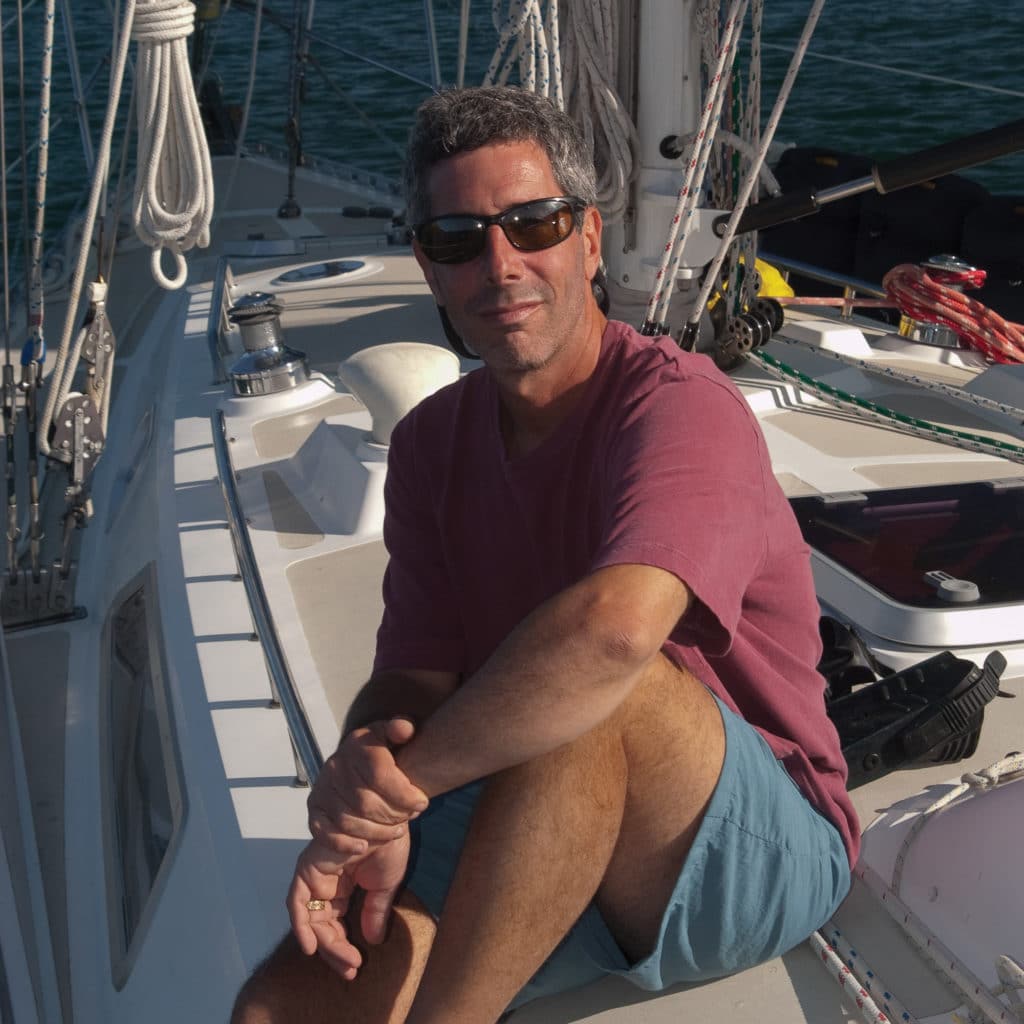
In 1978, Robbins accepted a job working on operating systems and enterprise-level software at a computer firm in Colorado Springs, Colorado. That’s where he met Schleigh in 1985.
“We did a ton of hiking and skiing, but I always wanted to learn to sail,” he says. Robbins also dreamed of being part of a startup venture.
In 1993, he accomplished both when they moved to Seattle to help launch a tech company. Seven years unfurled in a flurry of late nights and long hours bookended by time on Puget Sound.
“We joined sailing clubs, chartered boats, leased boats and, in the late 1990s, we bought our Nordic 40,” Robbins says.
Slowly, a shared dream of plying distant horizons formed.
“You can always make more money, but you can’t make more time,” Robbins says. In 2000, they weighed anchor. Years before, some Seattle-based friends had left for a long-anticipated circumnavigation, which a cancer diagnosis cruelly truncated, shattering their retirement dream. When Robbins explained the someday scheme that he and Schleigh shared, their friend said: “If it’s your passion, go now. You’ll find a way.”
“We were gone within the year,” Robbins says. “We wanted to do it while we were young and healthy. We didn’t have a ton of money, but we had time, and we had us.”
Resignation letters were written, the house was sold, and arrangements were made for Janelle, their 20-year-old daughter, to finish college, joining her parents at interesting points en route.
“We had no financial plan, and we had no objective,” Robbins says. “We just said that we’d keep doing it until we weren’t enjoying it anymore, and we each had a veto card. Luckily, we both wanted to keep going.”
Their journey started with a shakedown cruise from Friday Harbor, Washington, to southeast Alaska, followed by goodbyes in Seattle before Vesper sailed for San Francisco. Robbins and Schleigh spent a year-plus gunkholing through Mexico to Costa Rica before sailing to Panama and making a passage to the Galapagos Islands.
While Vesper was properly equipped, container ships’ speeds — coupled with their size, ever-increasing numbers and lack of maneuverability — had long since debunked the big-ocean theory.
Robbins realized that if he could receive these signals and integrate them with his own GPS information, he could write software that would alert him — miles in advance — of oncoming ships.
“Every journey has a surprise,” Robbins says. At one point, he says, suddenly “there was a ship right behind me. It wasn’t dangerous, but it was a how-did-that-happen moment.”
Sometime in the late 1990s or early 2000s, Robbins had read an article about AIS technology and how it was becoming mandated aboard internationally bound commercial ships. Robbins realized that if he could receive these signals and integrate them with his yacht’s own GPS information, he could write software that would alert him — miles in advance — of oncoming ships and identify the dangerous targets. As Vesper sailed for New Zealand, Robbins began writing software, launching what he thought would be just another one of “Jeff’s mad science projects.” He’d done pet software projects before, aimed at delivering custom solutions to specific problems. He gave them away as gifts.
“It was my problem, my puzzle,” he says. “I built my own device and sailed around New Zealand using and further developing it. I showed other cruisers, and everyone was adamant that I market it.”
Robbins wasn’t sold until 2007, when he negotiated the Panama Canal’s hectic western entrance aboard Serafin and his homespun device automatically differentiated dangerous targets from background lights. During the next several months, he started an AIS company in New Zealand, where he and Schleigh would become citizens.
Robbins’ background, coupled with Schleigh’s production and logistics expertise, made them a formidable team, but they needed someone with experience designing radio-frequency hardware.
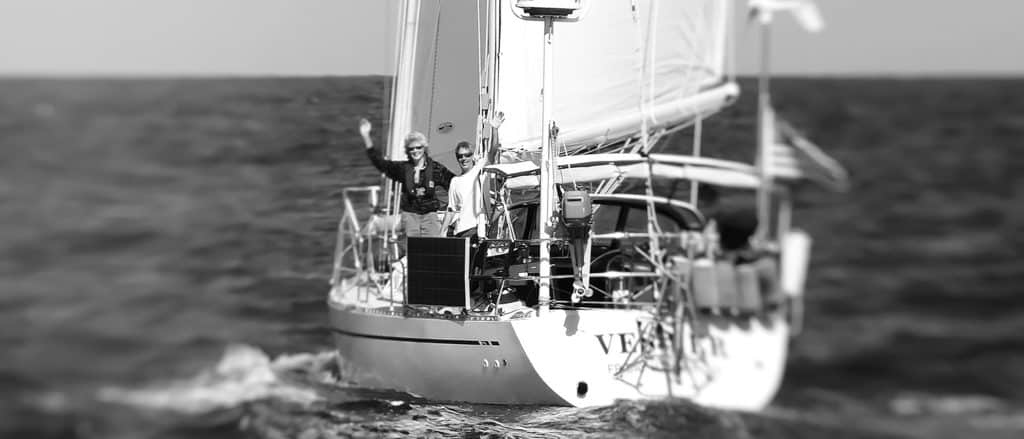
“We met Carl Omundsen over email, and he became our partner,” Robbins says. The three founded Vesper in Auckland in October 2007, and they shipped their first products in March 2008. “We weren’t the first company working on recreational use of AIS, but our focus then was on the unique needs of offshore sailors. We got it all going in six months. I’m pretty proud of this.”
Vesper’s first-generation AIS device, the WatchMate 650, was a low-power-draw, receive-only unit with a monochrome screen that identified dangerous targets and provided simple, graphical representations of upcoming crossing situations.
“Our mantra was that it has to be easy to use, especially for owners who only use their boats a few times a year,” Robbins says.
The WatchMate became popular with recreational boaters, and by 2009, Vesper began winning innovation awards.
“We initially thought, Wouldn’t it be cool if we could sell a few hundred of these?” Robbins says with a laugh.
His company now regularly ships thousands of AIS units to dealers and mariners on all seven continents while exploring larger-scale AIS applications (see “Unexpected Horizons”). Early Class B AIS transponders became available in the United States after the U.S. Coast Guard approved them in 2009, and by 2011, numerous companies were selling them. Vesper began manufacturing Class B AIS transponders in 2010, with features that could evaluate collision risk by filtering out unimportant targets, and that amounted to the marine industry’s first AIS anchor watch. Later, Vesper added NMEA 2000 translations and Wi-Fi compatibility, which allowed data to be displayed on third-party networked multifunction displays, PC-based navigation software and app-based wireless devices.
Earlier this year, Vesper released its latest AIS device, the WatchMate Vision2 smartAIS Touchscreen Transponder. It sports a high-resolution LCD screen, Wi-Fi connectivity, a USB port and an NMEA 2000 gateway. The unit also incorporates a refined version of Robbins’ target-filtration software that guided Serafin in 2007.
“It’s enormously rewarding to me to know one of our AIS units helped prevent a collision,” Robbins says. “I remember getting my first GPS. It was a revolutionary feeling, and I remember thinking that no one would ever want to go offshore without one. I had the same thought in 2007 exiting the Panama Canal. Once people have AIS, they won’t go to sea without it.”
Unexpected Horizons
Vesper Marine broadened the scope of its AIS expertise in 2011, when New Zealand’s Environment Southland Regional Council asked for a virtual aid to navigation that would mark storm-battered Tarapunga Rock in Doubtful Sound. Vesper’s resulting Guardian system impressed Stan Honey, technology director for the 34th America’s Cup, and in 2013 and 2017, Vesper helped define official America’s Cup racecourse boundaries. Vesper performed similar services for the 2017-18 Volvo Ocean Race, and has helped clients, including the New York Power Authority and the Port of Auckland, protect remote assets and identify shipping hazards.



